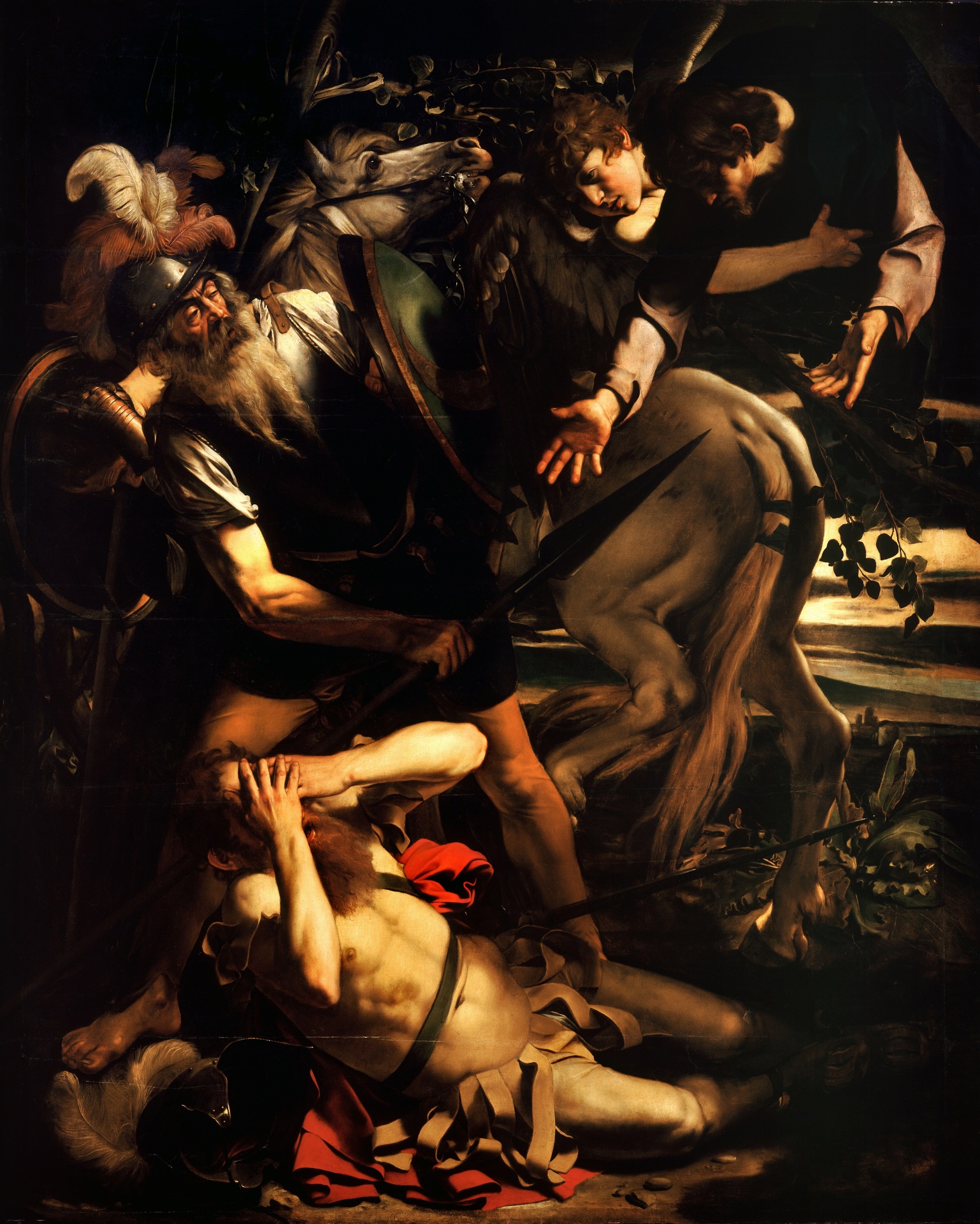Caravaggio - Conversion of Saint Paul 1600
 |
 |
 |
 |
 |
 |
 |

Conversion of Saint Paul 1600
237x189cm oil/canvas
Odescalchi Balbi Collection, Rome, Italy
The image is only being used for informational and educational purposes
<< Previous G a l l e r y Next >>
From Wikipedia, the free encyclopedia:
The Conversion of Saint Paul (or Conversion of Saul), by the Italian painter Caravaggio, is housed in the Odescalchi Balbi Collection of Rome. It is one of at least two paintings by Caravaggio of the same subject, the Conversion of Paul. Another is The Conversion of Saint Paul on the Road to Damascus, in the Cerasi Chapel of Santa Maria del Popolo.
The painting, together with a Crucifixion of Saint Peter, was commissioned by Monsignor (later Cardinal) Tiberio Cerasi, Treasurer-General to Pope Clement VIII, in September 1600. According to Caravaggio's early biographer Giovanni Baglione, both paintings were rejected by Cerasi, and replaced by the second versions which hang in the chapel today. The dates of completion and rejection are determined from the death of Cerasi in May 1601. Baglione states that the first versions of both paintings were taken by Cardinal Giacomo Sannessio, but another early writer, Giulio Mancini, says that Sannessio's paintings were copies. Nevertheless, most scholars are satisfied that this is the first version of the Conversion of Paul.
From Boston College:
This painting represents the moment when Saul (later to be renamed Paul) is on the road to Damascus to carry out a persecution of the young Christian community. He has a vision as Christ calls out to him, "Why are you persecuting me?" In the position of the St Paul and of the Christ, and in the movement of the horse into the depth of the picture, this work is still related to the tradition of Michelangelo, but there are decidedly Caravaggesque elements in the work, such as the face of the angel supporting Christ. amd in the play of light upon Paul's fallen form.